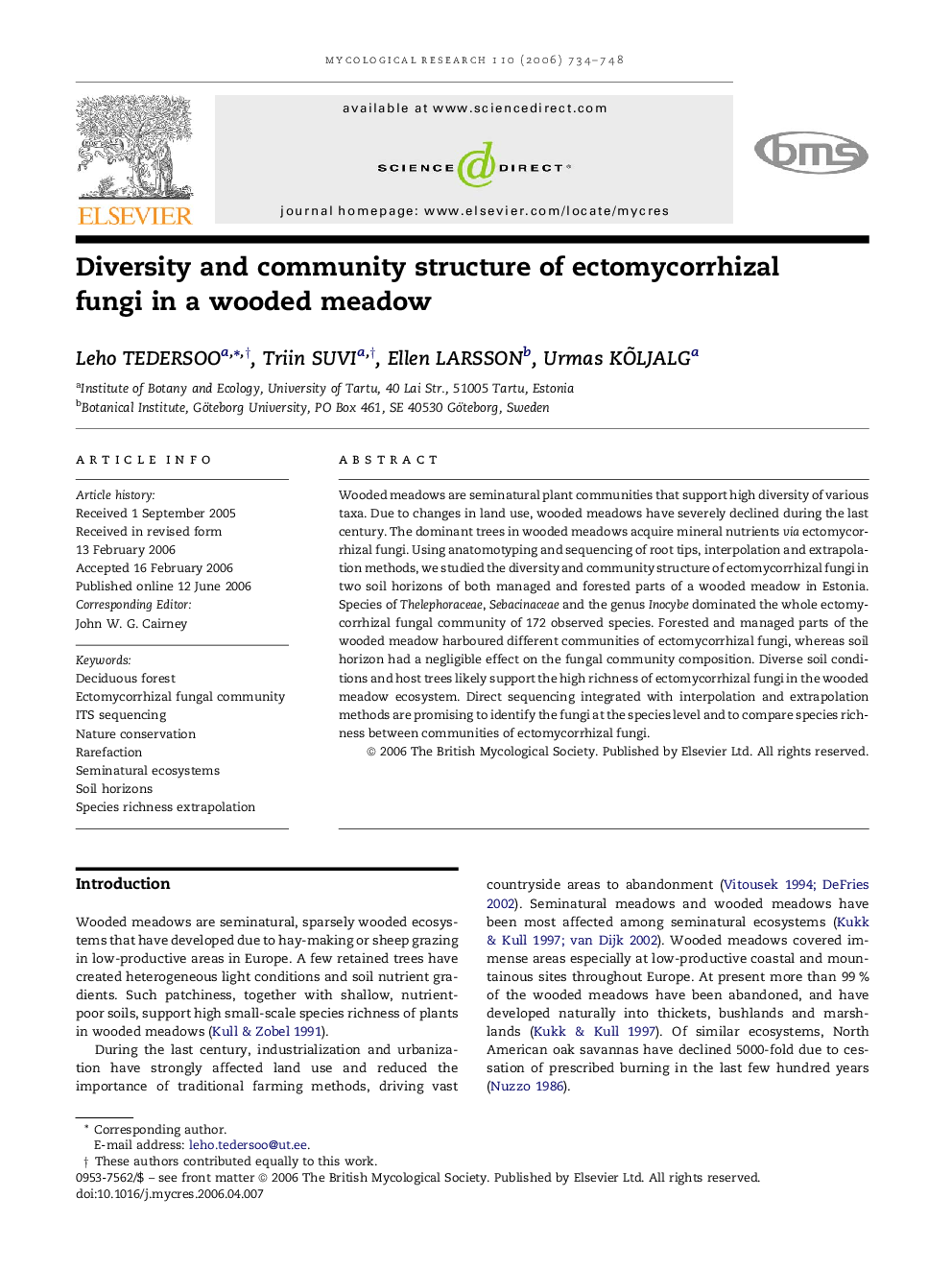| Article ID | Journal | Published Year | Pages | File Type |
|---|---|---|---|---|
| 4358116 | Mycological Research | 2006 | 15 Pages |
Abstract
Wooded meadows are seminatural plant communities that support high diversity of various taxa. Due to changes in land use, wooded meadows have severely declined during the last century. The dominant trees in wooded meadows acquire mineral nutrients via ectomycorrhizal fungi. Using anatomotyping and sequencing of root tips, interpolation and extrapolation methods, we studied the diversity and community structure of ectomycorrhizal fungi in two soil horizons of both managed and forested parts of a wooded meadow in Estonia. Species of Thelephoraceae, Sebacinaceae and the genus Inocybe dominated the whole ectomycorrhizal fungal community of 172 observed species. Forested and managed parts of the wooded meadow harboured different communities of ectomycorrhizal fungi, whereas soil horizon had a negligible effect on the fungal community composition. Diverse soil conditions and host trees likely support the high richness of ectomycorrhizal fungi in the wooded meadow ecosystem. Direct sequencing integrated with interpolation and extrapolation methods are promising to identify the fungi at the species level and to compare species richness between communities of ectomycorrhizal fungi.
Keywords
Related Topics
Life Sciences
Agricultural and Biological Sciences
Agricultural and Biological Sciences (General)
Authors
Leho Tedersoo, Triin Suvi, Ellen Larsson, Urmas Kõljalg,
